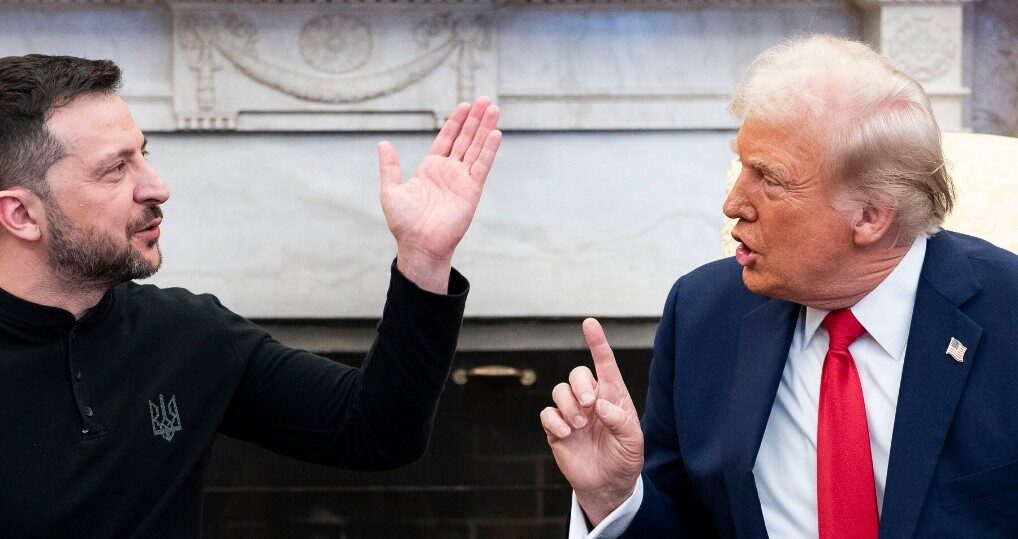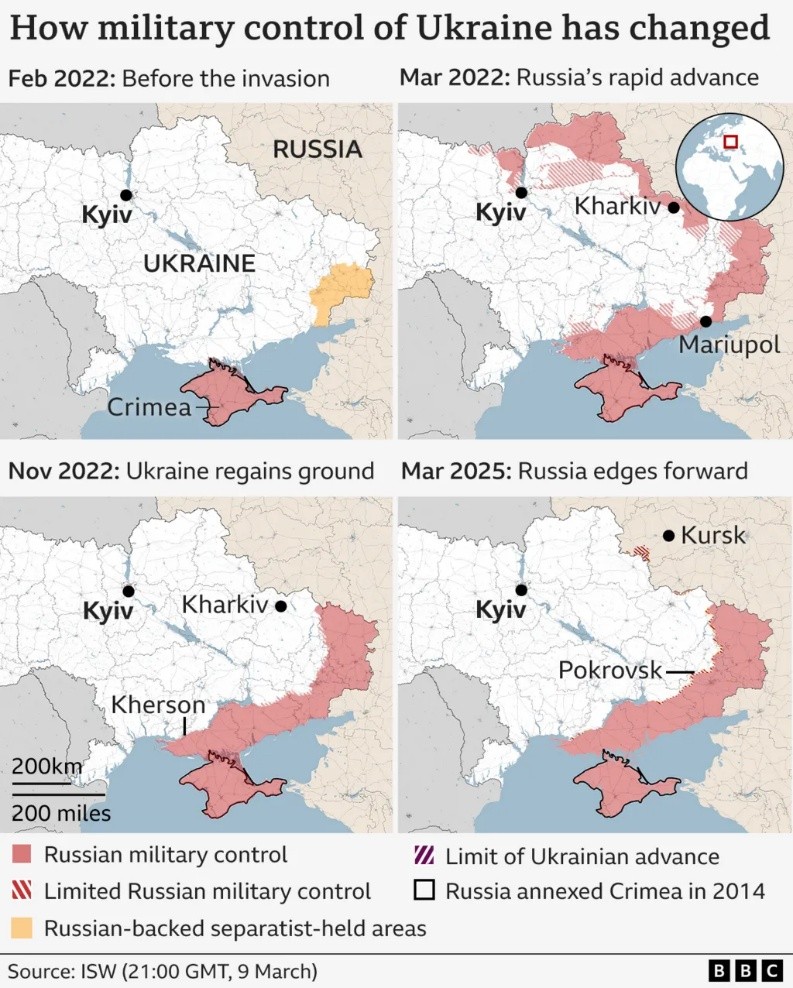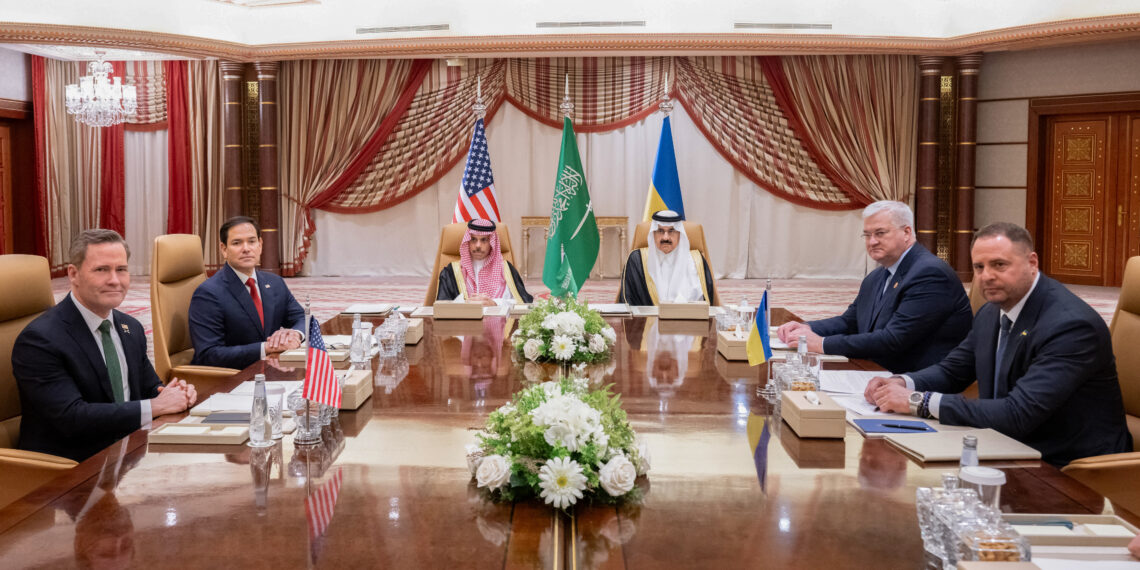Dimitris Kouvaras,
More than three years have passed since Russia invaded eastern Ukraine in late February 2022, initiating the first major conflict in Europe in three decades. During this time, the war has come in and out of headlines, yet always remained a topic of discussion and concern due to the implausibility of tangible solutions. Nowadays, the situation in Ukraine is, once again, at the epicentre of attention as a possible pathway to (temporary) peace appears on the horizon. Washington and Kiev agreed to a US-brokered 30-day ceasefire deal in Jeddah on the 11th of March, which has been forwarded to Russia, but has yet not received a concrete response. The agreement may come as a surprise after the heated Oval Office discussion between Trump and Zelensky on February 28th during his visit to Washington, in which misunderstanding and disjunction seemed to reign. Nonetheless, the proposal eventually made it through, marking a significant —yet questionable— development in the ongoing conflict. In this article, I will share some thoughts about the situation, acknowledging its global dimension and the multiplicity of stakeholders in place, stretching from the US to Europe.
Starting with the Oval Office meeting, which saw Trump and Vice President Vance unprecedently ranting against a primarily defensive Zelensky, one could discern some of the Republican administration’s motives behind the proposed ceasefire. Trump seems to be uneasy about excessive US international commitments, according to his nationalist “America first” policy and reversion into a regionalist security focus, and at the same time, he appears to be comfortable with the idea of a multipolar world, thereby conceding to Russia’s claimed spheres of interest in Ukraine. Therefore, in his mind, a truce might be a way to detach the US from spending on the continuation of other peoples’ wars. Nevertheless, as the Oval Office discussion highlighted, the proposal of a truce deal seems to be targeted equally —if not primarily— to internal consumption. DJ Vance reprehended Zelensky for being disrespectful and unthankful towards the “benevolent” US government, stressing its pursuit of active diplomacy against war, while simultaneously transgressing all diplomatic etiquette. Meanwhile, he and Trump continually emphasized the presumable failures of the Biden and Obama administrations’ handling of the Ukrainian issue, as Trump jumped at the chance to call Biden “stupid” and conclude that “Obama gave you sheets, and I gave you javelins”. By bluntly stating to Zelensky, “You have to be thankful, you don’t have the cards”, and justifying the continuance of Vance’s diatribe against the Ukrainian president through the need for the American people to know “what is going on”, he made clear who formed the audience of the discussion.

Amidst widespread internal criticism for his dangerous economic policy and executive power abuse and international repercussions evident in Europe’s diplomatic shift and Tesla’s plunge in the stock markets, the Trump administration sees the Ukrainian truce deal as a means of profile face-lifting, nationally and abroad. Treaties that halt or end wars serve as the spine of conventional history and can make valuable propaganda tools in their ability to excite sentiments of national pride and project international prestige. Trump and Vance made clear in the Oval Office meeting that “American media” were the primary target of the conversation in which they portrayed America as the powerful yet benevolent arbiter of international relations and the Republican administration as effective, diplomatic, and peace-loving. If successful, the truce will legitimise Washington’s unforgivable impudence while providing Trump with an undeniable achievement in foreign policy, which would overshadow the absurdity of his government’s domestic actions and enhance his profile as a gifted leader and negotiator.
In this scenario, the foreign policy success story would become the perfect distraction against governmental abuse and economic precarity and allow a de facto legitimation of US policy by allied leaders, bridging the existing schism to America’s advantage, without any commitment on Trump’s behalf. The goal of effortlessly keeping NATO allies at bay is evident from the acknowledgment of Europe’s undefined role in the truce, while the noncommittal character of American foreign policy is exemplified by the lack of tangible guarantees for Ukrainian security in the scheme. In other words, Trump is looking for something to make favourable headlines and shed away international aid responsibility irrespectively of durability or concern for Ukraine. In other words, he wants to have his cake and eat it.
Regarding the Ukrainian side, Zelensky got most of what he wanted. Facing military difficulties and being in partial retreat in the occupied Kursk Russian region, where Putin’s forces are advancing similarly to the eastern front, Zelensky accepted the deal, which provides for “an immediate, interim 30-day ceasefire” in the Black Sea and the entire front line. The Ukrainian delegation in Jeddah proposed further terms, including the cessation of drone and missile attacks and the release of war prisoners and Ukrainian children sent to Russia, while gaining a resumption of US intelligence-sharing because of the agreement. However, the road to peace is rough. Concerning the American side, US Secretary of State Marco Rubio made clear that territorial concessions to Russia are necessary for the attainment of peace, even though Zelensky declined the scenario of recognising occupied territory as Russian in one of his latest X addresses. Nevertheless, margins for that are slim, since Kursk –the only territorial negotiating card in Ukraine’s hands– slips out of its control.
What’s more, even if he agrees to such concessions, concrete security guarantees from the US would require concessions of mineral resources and financial privileges, based on the mineral deal that would have been signed with the US on February 28th weren’t for the diplomatic rant. As for Putin, after two days of silence regarding the ceasefire proposal, he maintained that “the idea itself is correct” but also stressed several points to be discussed, including the Ukrainian evacuation of Kursk, the armament of Ukraine by NATO allies and its mobilisation during the 30 days of the truce. All in all, what Putin wants is a vulnerable Ukraine without strong security guarantees, besides the territory of its eastern provinces. In that context, the ceasefire might as well be seen as temporary.

Meanwhile, Europe finds itself in an awkward middle position. A “coalition of the willing” is being formed by mostly European and some Commonwealth allies at the initiative of British Prime Minister Keir Starmer, denoting Europe’s determination to stand by Ukraine and supervise a fair ceasefire or step up economic sanctions on Russia, depending on the proposal’s outcome. This unifying movement combined with Europe’s shift towards rearmament after America’s threatened wavering of mutual NATO commitments. However, what was likely intended to work as a counterbalance to a potential US’s ditching of Ukraine now must find its role within a US-led initiative towards peace. Whereas a desired European emancipation in international relations would be attained by necessity in the former scenario, it becomes way more complicated in the latter since Europe would have to follow Trump’s footsteps –at least to some extent.
As one can see, there is no single face on the proposed ceasefire in Ukraine. In any case, it remains uncertain, and the possibility of its leading to a lasting peace is even smaller, not least due to the unaddressed issue of Ukrainian territory, which Russia considers as part of its “vital space”. If Putin, who is expected to talk with Trump within the week, agrees, fighting will stop for a while, but uncertainty will remain. It will be recorded as a happy event in media worldwide. Nevertheless, it will be a ceasefire produced by an American tour de force over Ukraine and set a potentially dangerous precedent of legitimising Trump’s foreign policy and coercive diplomatic methods. Therefore, there will also be a less happy side to it. For sure, whatever happens will provide ample food for thought for the way international politics works or should work.
References
- Trump’s Ukraine ceasefire plan: What we know so far. Politico. Available here
- Putin questions Ukraine ceasefire plan and sets out string of conditions. The Guardian. Available here
- Ukraine accepts 30-day ceasefire in US talks: What it means for Russia war. Aljazeera. Available here
- U.K.’s Starmer convenes ‘coalition of the willing’ meeting to discuss Ukraine. NRP. Available here
- Zelensky describes Oval Office meeting as ‘regrettable,’ says he is ready to negotiate peace. CNN World. Available here




